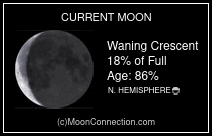Partly sunny and above freezing from the start, it was a full-on
beach day when the wind wasn’t blowing. The ice was still about 10-inches thick
of varying quality—not bad for March in Connecticut, especially considering the
strange 2018-2019 winter we had. In the back of mind, I knew it was my last
trip of the season, so I tried to keep that in perspective throughout the day.
A 7 a.m. arrival was later than I’m used to, but how can one
complain when getting the red carpet treatment? I was the guest of a friend of
a friend that lives in a homeowner’s association with private access. Even
better, it was to a location I had never laid eyes on before. Opportunities
like this don’t come my way often and I was pumped up to check out new water.
The conditions looked good on paper. Wedged between two snow
events, I had high hopes for a moving barometer and feeding fish. Northern pike
were the target and in this particular waterbody, the predators seem to prefer
their food alive and well. So, with that in mind, I mixed in a few big live
shiners on jigging rods along with my usual dead baits under tip-ups.
One of the rod and reel combos was a conventional set-up that
I placed in a Nor’Easter—a contraption handmade by a mom-and-pop
operation called Indian Hill. Like a traditional tip-up, it gives the visual
aid of a tripped flag when your bait is taken. Unlike a tip-up, it allows the
angler to fight the fish on a rod instead of by hand. Fighting a pike through
the ice on a jigging rod has always appealed to me, but I never had any luck in
the dozen or so outings I have tried this thing out.
I saved the Nor’Easter for the last hole I drilled in about
11-feet of water halfway into a large cove. With my host at my side, I sent
down a lively Arkansas shiner and placed the line in the line holder that acts
as the trigger. It’s a clever design, but it can be a little temperamental and
trip false flags once in a while. Sure enough, after setting it, we got no more than five paces away
and it pops. I joked that the wooden trap would end up
as kindling if it kept this up all day. To my pleasant surprise, the
braided line was off to the side just a hair when we got back to it. I literally
must have dropped the baitfish right on top of a pike lying in wait.
Crouched next to the hole, I picked up the rod, engaged the
reel, and slowly came tight to some weight that began swimming away. It lasted
only a minute or two, but it was a really cool experience battling my first
pike on a jigger. A respectable fish, not huge by any means, but healthy,
full of fight, and quickly released. I wish I could say that started a chain
reaction of flags popping all over our spread, but it was not to be. We did,
however, have a blast just soaking in the sun and enjoying the prospect of a
huge fish moving in at any moment to feed.

What lacked in flags was made up in jigging for panfish. It’s
not worth the effort in most places that I fish for pike, but this spot had
good depth and the bottom was paved in yellow perch. A bonus was reeling in a big
fallfish. Awesome pike baits in their own right, I immediately airlifted it to
one of my tip-ups and put it to work. I also missed a mystery fish that doubled over my rod to its cork handle. I am guessing it was a pike that
zeroed in on the school of perch, but in that body of water the options of what
it could have been are numerous. Regardless, it was enjoyable showing my
fishing partners the clear benefit of having electronics when jigging on the
ice. Even the basic model fish finder that I have can be a game changer.

By early afternoon, dad life was calling and it was time to
start a slow pick-up in hopes for one final flag before hitting the road. Naturally,
I let the Nor’Easter soak for as long as possible, but no more luck for me. Buddy saved his luck for late in the day. When I got home, he texted a photo of a
pike he landed similar in size to mine. Two pike over 30-inches and a pile of panfish, all in all, that's a pretty good day. I met some new friends,
fished new water, and checked a new box—northern pike on the jigging stick. A neat ice fishing first on the last day of the season.

































.jpg)



























